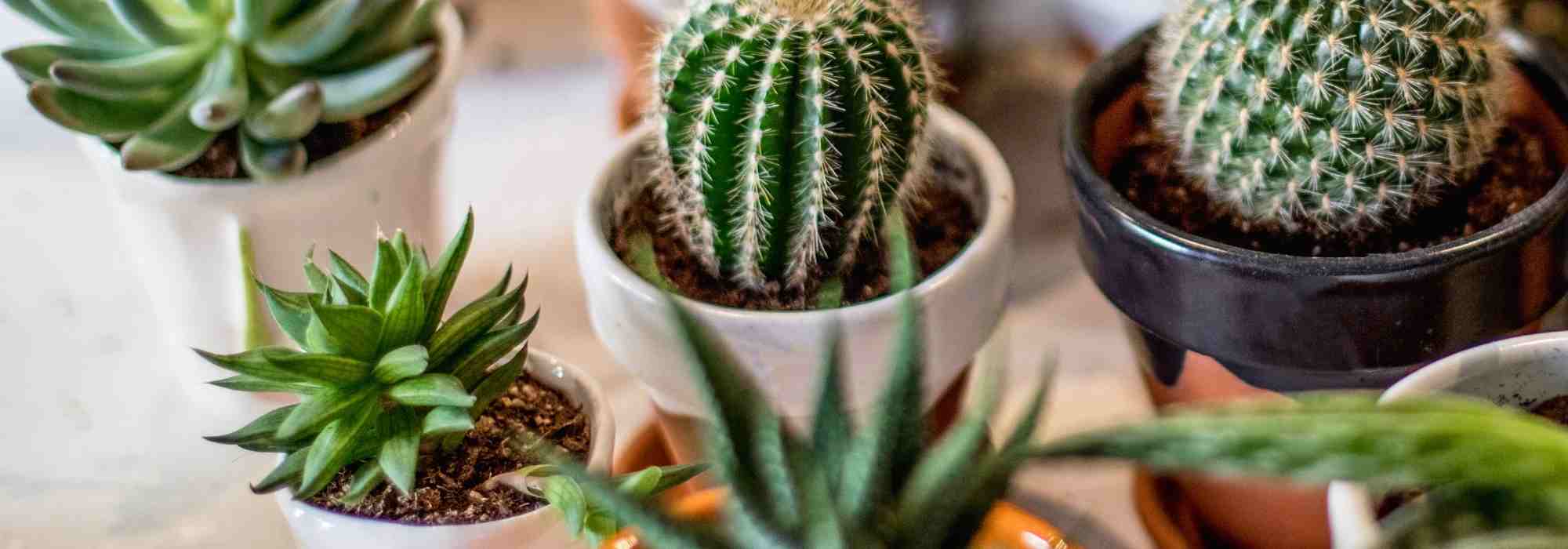
Growing Cacti Indoors: Light, Soil, Watering… Everything You Need to Know!
All You Need to Know About Cactus Care, From Planting to Watering
Contents
Perfect for indoors where they find the dry atmosphere and temperatures that suit them, cacti are highly decorative. They bring an undeniable exotic and original touch to any décor, especially as they come in a multitude of forms: columnar (Cereus), spherical (Mammillaria, Echinopsis…), or with prickly pear pads (Opuntia…). To this charming asset, we can add their ease of cultivation and care. Indeed, if there’s one group of undemanding houseplants, it’s cacti. In fact, one might even think that the more you “forget” them, the better they thrive. This isn’t entirely true. Cacti, these succulent plants from deserts and arid zones, distinguished by the areoles from which more or less sharp thorns or prickles emerge, still need some care and minimal maintenance to enjoy their exceptional beauty—and even see them flower.
Discover our tips and advice for growing your cacti indoors, from planting to watering, including light exposure and temperature.
Which cactus species are best suited for indoor growing?
Not all cacti are suited to indoor living! Some, like the Opuntia, prefer the outdoors, where they benefit from intense sunlight and good air circulation. Some are even very hardy. On the other hand, other species thrive perfectly indoors thanks to their compact size and ability to tolerate indirect light.
Among the best options for a bright interior is the Gymnocalycium, which adapts well to pot cultivation and enjoys light without overly intense direct sun. The Echinopsis, known for its stunning nocturnal flowers, is also an excellent choice, though it prefers a bit more sun. The Mammillaria, forming small balls covered in soft thorns, is ideal for beginners as it requires little maintenance. Finally, the Astrophytum, with its unique star-patterned appearance, grows slowly and tolerates moderate lighting, making it perfect for indoors. But there are many others, such as the Epiphyllum, or zigzag cactus, which has the peculiarity of lacking thorns, or the striking Cereus forbesii ‘Spiralis’.
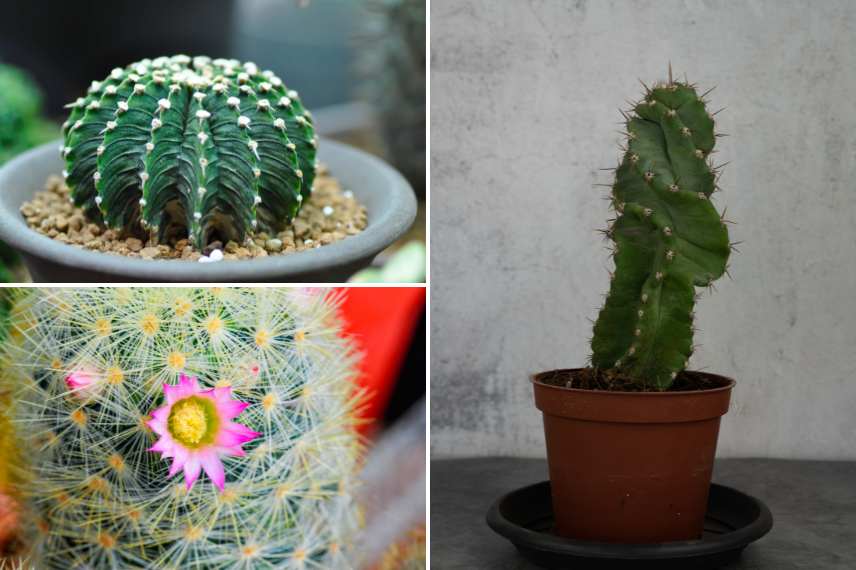
The Gymnocalycium, the Mammillaria, and the striking Cereus forbesii ‘Spiralis’.
When choosing your cactus, consider its mature size: some species remain small, while others can become quite large. Light requirements are also essential: a spot near a well-exposed window will be ideal. Finally, opt for slow-growing species if you have limited space.
What light for a cactus?
An indoor cactus needs intense light to thrive. Native to arid and sunny regions, most species require at least six hours of direct sunlight per day to maintain healthy growth. The ideal spot for your cactus is near a south or south-west facing window, where it can enjoy maximum exposure. If your home lacks natural light, using suitable artificial lighting, such as LED grow lights, can compensate for the lack of sunshine by replicating an optimal light spectrum.
In summer, if possible, don’t hesitate to move your cacti outdoors, in the garden, on the terrace or balcony. You can place them in full sun and increase watering during heatwaves.
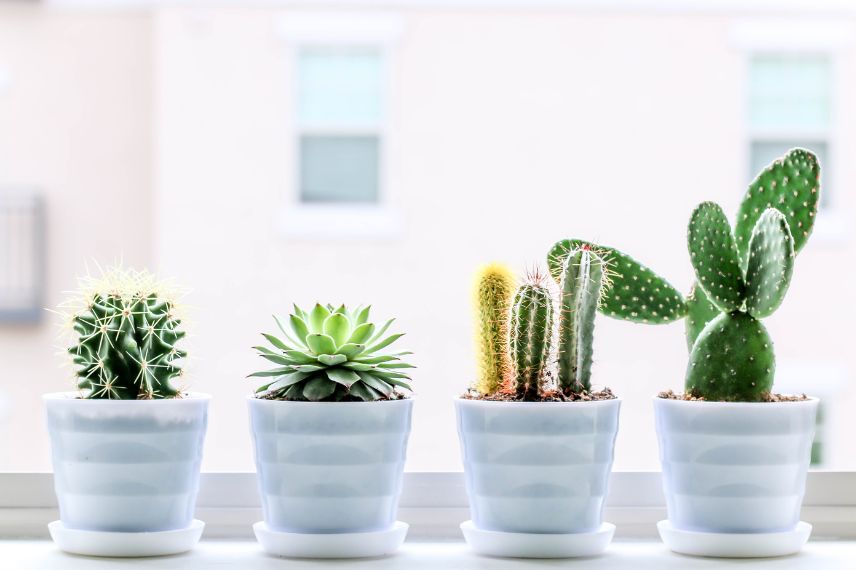
Cacti need excellent light exposure, both in summer and winter
In winter, with reduced daylight, it’s essential to place them as close as possible to the light source and ensure no obstacles like curtains filter the sun’s rays. Ideally, a conservatory or winter garden are the most suitable spaces for cacti during winter.
Be mindful of sunburn when suddenly moving a cactus from a shaded spot to direct sunlight: gradual hardening is necessary. In overly dark conditions, the plant may lose its compact shape and vigour, making it more susceptible to diseases and parasitic pests.
What substrate and pot for indoor cacti?
The choice of substrate and container is also essential to ensure perfect growth for cacti.
When it comes to substrate, one key principle must be remembered: cacti require an aerated, light, well-draining substrate, even when wet, to prevent waterlogging and root rot. There are specially formulated composts for cacti and succulents, but you can also make your own sandy and granulose mix using universal compost, garden soil, coarse sand, perlite, vermiculite, or pumice, in equal parts.
Of course, to ensure optimal drainage, a layer of gravel or small pebbles should be placed at the bottom of the pot.
Finally, the choice of pot should not be left to chance. Indeed, terracotta pots are ideal for cacti, as their porate walls allow excess water to evaporate. Avoid plastic pots, which are far less attractive and, more importantly, less effective, as they retain moisture.
What is the ideal watering routine for healthy cacti?
This is often the main stumbling block for happy cactus owners! The frequency of watering is indeed a crucial factor for the health of cacti grown indoors, as overwatering can quickly damage or even kill your plant. Never forget that cacti originate from arid regions or deserts, where rain is scarce. This is why their fleshy leaves or stems store the water they need to withstand drought.
Depending on the season, watering should be adjusted accordingly. In spring and summer, during the growth period, water at least once a week, or even twice during intense heat. Be careful never to leave residual water in the saucer or decorative pot, as this risks rotting the roots. As autumn arrives, gradually reduce watering to prepare the cactus for its winter dormancy phase. In winter, watering once a month is more than enough, and in small quantities. Some even go without water entirely during their rest period, especially when kept in cooler conditions.
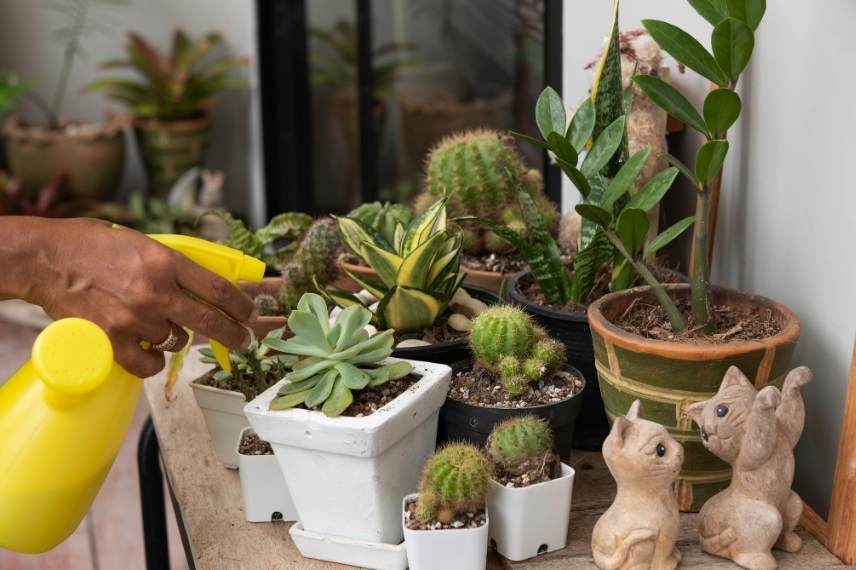
Cacti require frequent watering in summer, but less often or none at all in winter
Preferably water in the morning or late afternoon to avoid potential sunburn. And use non-calcareous water whenever possible to prevent deposits on the roots. Rainwater is ideal.
What temperatures and humidity levels are needed to create a suitable climate?
Cacti are plants adapted to arid climates, but indoors, it’s essential to recreate conditions close to their natural habitat to see them thrive.
Warmth in summer, coolness in winter
During their growth period, i.e. in spring and summer, cacti appreciate temperatures between 20 and 30°C. They love heat and light, so place them near a well-exposed window. The warm atmosphere of our interiors suits them perfectly.
On the other hand, winter marks a period of dormancy for many species. It is then advisable to keep them at a cooler temperature, between 5 and 10°C, in a bright and dry room, to provide them with the best growing conditions, and incidentally to encourage beautiful flowering in spring. Ideally, an unheated conservatory or winter garden meets cacti’s needs.
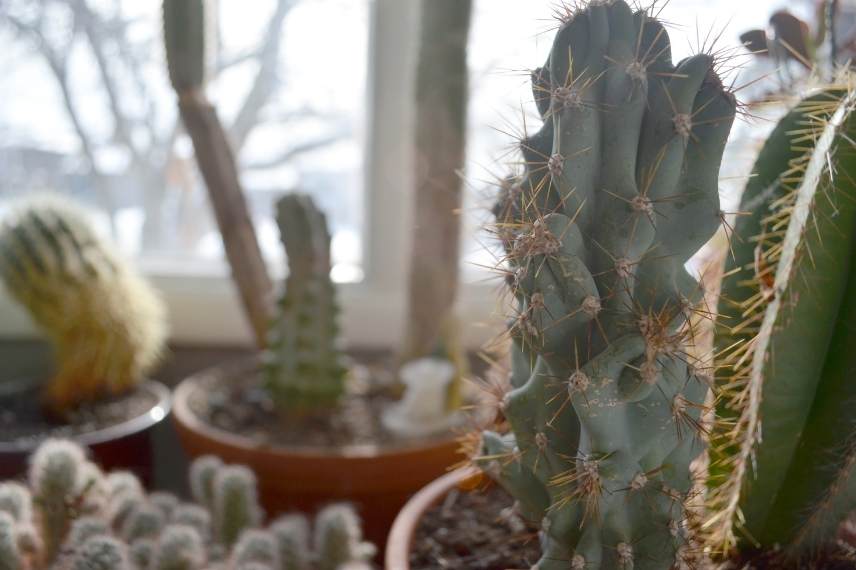
Cacti need some coolness in winter
Beware of excessive humidity!
Cacti tolerate high humidity poorly. Excess moisture in the air or too frequent watering can encourage the appearance of fungal diseases such as root rot or black spots on the epidermis. It is crucial to ensure good ventilation of the room and avoid watering during cold periods. So remember to ventilate, for your well-being, but also for that of your indoor plants and cacti. Even in winter!
Constant vigilance to prevent diseases and parasitic pests
Indoor cacti, although adapted to arid conditions, require regular monitoring to prevent diseases and parasitic attacks. Indeed, even minor cultivation mistakes such as excessive humidity, poor ventilation or insufficient light can affect the health of cacti. Very quickly, parasites or diseases may appear. Close observation allows for prompt intervention and prevents sometimes irreversible damage.
Mealybugs are among the most common pests. These small insects nest in the folds of stems, forming white cottony clusters or brownish patches. A thorough inspection, especially on hidden parts of the cactus, helps detect them before they multiply. Treatment with diluted alcohol mixed with black soap, applied with a brush or cotton bud, can help eliminate them.
Spider mites, almost invisible, can be detected by yellowing tissues and fine webbing. They thrive in overly dry air, hence the importance of ventilating the environment in winter and regularly checking stem colour and texture.
Fungal diseases, such as root rot or Botrytis, are often caused by overwatering or unsuitable substrate. Monitoring soil moisture and suspicious spots on cacti helps mitigate these risks. Spacing out watering and ensuring good ventilation significantly reduces infections.
For optimal prevention, it’s advisable to inspect cacti regularly and isolate infested plants.
Read also: Diseases and parasites of indoor cacti: how to treat and prevent them?
Infrequent but necessary repotting
While it’s true that cacti don’t need repotting as often as other houseplants, they should still be repotted upon purchase (as they usually come in plastic pots) and then every 3 to 4 years. A tricky operation given their thorns!
First, make sure to equip yourself with thick gardening gloves, such as these special rose pruning gloves. Alternatively, a simple newspaper can also do the trick.
Repotting should be done during the growth period, between late winter (around March) and early autumn. Choose a slightly larger pot, place a layer of gravel at the bottom, fill with suitable substrate, and plant your cactus in it.
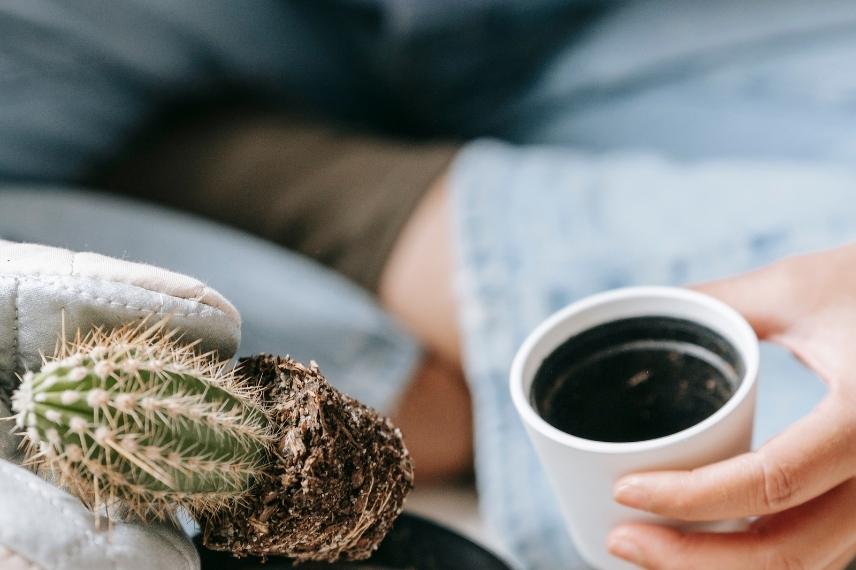
Repot your cactus upon purchase, then every 3 to 4 years
- Subscribe!
- Contents
































Comments